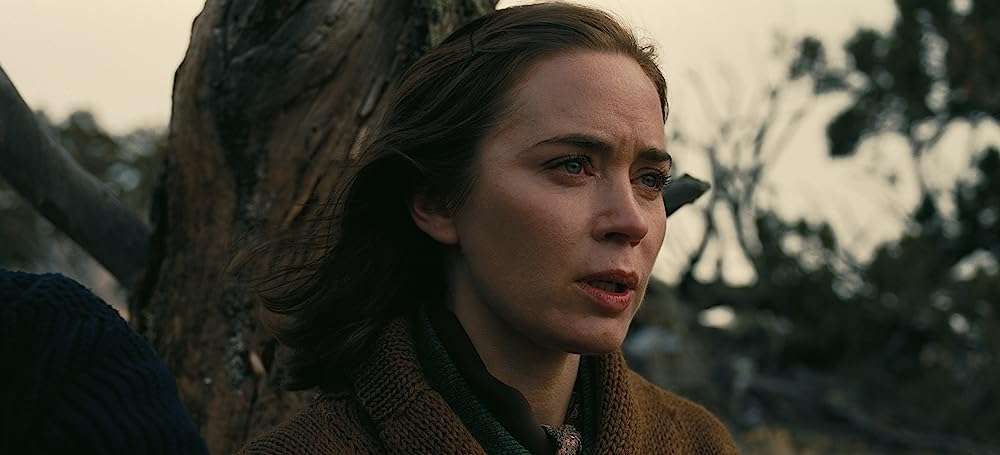Oppenheimer (2023) Explained: Julius Robert Oppenheimer needs no introduction as the director of the Manhattan Project. Dubbed “the father of the atomic bomb” after the first and only use of nuclear weapons in an armed conflict by the USA in the Japanese cities of Hiroshima and Nagasaki, Oppenheimer went on to become the most celebrated American scientist of his era despite being more relevant and occupied in roles of administrator and statesman than a scientist himself. What most people do not know, however, is Oppenheimer’s political murder in the McCarthyite era that made him one of the first prominent victims of the Second Red Scare.
But not quite directly because Joseph McCarthy himself didn’t persecute Oppenheimer. His approach was blocked by Oppenheimer’s political enemy, Lewis Strauss so that Strauss could have him by himself in a manner hitherto not envisaged. At this point, questions around the themes Christopher Nolan’s first biographical drama deals with arise. Understanding the political climate in which “Oppenheimer” (2023) is set, the motivations of the different characters it has, and the emotional turmoil the protagonist goes through are imperative for a comprehensive experience of the film, one that leaves you with a nuanced opinion of not just the structure of this character sketch but also of the character.
The truth around the bomb is complex, and so is its father. Our world has gone through many changes. In the natural history of our planet. There have been five apocalyptic events that led to the extinction of life. With the invention of the nuclear bomb, the apocalypse remained no longer a naturally occurring phenomenon. Humanity became capable of causing the mass extinction of life. And much like the discoveries of wheel, fire, and cultivation enabling the origin and sustenance of civilization, the discovery of nuclear power allowed civilization to become the harbinger of its own destruction as well. We now live in a world where peace is an outcome of fear.
It is necessary to recognize that much of Oppenheimer’s later life was informed by America’s aggressive nuclear strategy that not only initiated but also fuelled the Cold War. As a theoretical physicist, he understood the power that was held by a nuclear weapon. Therefore, it wasn’t long before he realized that the weapon he thought would bring eternal peace by killing all future wars was nothing different than a weapon to gain strategic advantage within the hands of politicians and the military and in times when opacity in matters of policy was celebrated.
What was the Second Red Scare?
During and in the aftermath of World War II, imperialist forces weakened in the eastern part of the world due to increased struggle against their invasion. They lost direct political control, and colonization was compelled to change its design if not abandon the colonies completely. Different societies found themselves at the gate of possibilities, all of which also came with crucial responsibilities. The Second World War devastated Europe and left both the winning and the losing blocs in debt. The Japanese empire fell, and the nation restructured itself with liberal democratic institutions. The nationalist government in China was hollowed out in its war with Japan. The communist party managed to unify the rural class against the invaders, which led to the creation of a communist state in China.
The United States found itself in a crude power struggle with the Soviet Union, and with the latter’s transformation to nuclear power in 1949 after successfully testing the atomic bomb, the US lost its strategic edge in the battle of ego and muscle. The rise of communist forces in the east propelled the second red scare in the militarily strongest country of the then-world. The USA felt politically vulnerable not because its sovereignty was threatened but because its imperialist control was weakening. Internally, the state began targeting all individuals with any form of direct or remote communist association and/or left-leaning past, claiming them to harbor sympathetic attitudes towards the Soviet Union. The campaign soon came to be defined by falsehoods and inflated allegations to create mass hysteria and maintain a political image that could grip the public support by making them fearful of Soviet invasion.
The US can be observed to follow a modus vivendi model for the social order. In a modus vivendi model, an institutional order is established without any moral consensus. It sustains itself merely because its participants find it in their self-interest to sustain the institutional design. It is illustrated that the power struggle between states overwhelms the concerns of morality, and the state often inflates its resources and ensures its survival and luxury at the cost of others. The second red scare was a manifestation of the greed for power and the need to exert it.
Oppenheimer (2023) Plot Summary & Movie Synopsis:
Nolan’s “Oppenheimer” (2023) focuses on the protagonist’s journey through three stages: his political ambition, his political assassination after achieving what he was ambitious about, and finally, his political rehabilitation once the world caught up with truths that were morphed, butchered, or buried. The film starts with the segment titled “The Fission,” which covers Oppenheimer’s life divided into two parts. Another segment that is simultaneously running is titled “The Fusion,” shot entirely in black and white.

The Fission
A fifty-year-old Oppenheimer is sitting before a bench of inquiry constituted by the AEC to decide if his security clearance should be reinstated after the commission revoked it at the receipt of a letter that alleged him of being a communist and a Soviet spy. The security hearing is happening in a small dingy room with nothing but a couple of desks and a leather couch by the wall for the inquired to sit on while others testify for/against him.
As the leading nuclear physicist who is credited with bringing quantum mechanics to America as a discipline and successfully leading the Manhattan Project, in which the first nuclear warhead was developed, Oppenheimer had security clearance to access all classified atomic knowledge and government secrets. He is also the chairman of the General Advisory Committee to the AEC, which makes the security clearance vital for his role.
As allegations of being a Soviet spy had resurfaced against him in a vitriolic letter to the FBI by William Liscum Borden, a young staff member of the Joint Committee on Atomic Energy, which was subsequently forwarded to the Secretary of Defense and the President, Eisenhower had ordered to immediately erect a complete bar between the man and any information of sensitive or classified character. To answer the allegations against him, Oppenheimer had gone through many deliberations with his attorneys and had come up with an autobiographical response that ran to forty-two typed pages. The film, henceforth, begins with Oppenheimer narrating his life story as a response to the questions in the inquiry against him.
Consequently, The Fission covers Oppenheimer’s young days in Cambridge and, thereafter, in Gottingen at the recommendation of Neils Bohr in a montage-like sequence. After gaining expertise in theoretical quantum physics in the nurturing environment of Europe, Oppenheimer decides to return to America to teach at the University of California, Berkeley. Having successfully established Berkeley as one of the leading centers of quantum physics and making for himself a reputation that precedes the man, Oppenheimer gets recruited by General Leslie Groves as the director of the Manhattan Project.
As stated above, The Fission covers Oppenheimer’s journey from a young boy to becoming the director of the US program to develop the atom bomb, which culminates in the Trinity test. With the narration of life being a first-person account, The Fission also simultaneously includes the Security Hearing in 1954.
The Fusion
An ambitious and marginally arrogant Oppenheimer riding high on the fruits of his reputation has troubled Lewis Strauss, chairman of the AEC, by hurting not only his ego but, inadvertently, his dignity. Lewis Strauss appointed Oppenheimer as the director of the Institute of Advanced Study in Princeton, New Jersey, in the capacity of the chairman of the institute’s committee of trustees. But Strauss is a raging conservative who is disturbed by Oppenheimer’s protest against the development of the thermonuclear (hydrogen) bomb, also known as the Super. He is aware of Oppenheimer’s past communist associations, but the latter’s credibility and remarkable achievement are not lost on him. But Strauss is turned increasingly against Oppenheimer and, hence, wishes to destroy his credibility in Washington circles.
He finds Oppenheimer a threat to national security and is driven by vengeance for the public humiliation he faced in the open session of the Joint Committee on Atomic Energy regarding the export of radioisotopes to foreign laboratories for research purposes. All approved the exports except for one AEC commissioner, Lewis Strauss. In an effort to reverse the AEC decision, Strauss publicly testified against exports before the JCAE. When Oppenheimer sat before the Senate to testify, he was aware of Strauss’ concerns but deemed them foolish.
In a display of effortless public speaking, he loaded his testimony with sarcasm and wit, causing Strauss public humiliation. Being the thin-skinned, vengeful man he was, Strauss became determined to assassinate Oppenheimer politically and end his influence forever. But he had to be cautious not to let the matter go into the hands of Joseph McCarthy, who he considers a clown. It has to be an inquiry and not a trial because he wouldn’t want Oppenheimer to become a political martyr. There shall be no burden of proof in the security hearing, and it must work to destroy the man’s integrity and confidence in himself.
Strauss’ narration of the plan against Oppenheimer is coupled with his confirmation battle in 1959. As Strauss’ term as the AEC chair ended in June 1958, Eisenhower offered him the role of Secretary of Commerce, which was opposed by the Senate, leading to a confirmation battle. The Oppenheimer case became a central factor in the hearings. Scientists effectively lobbied the Senate to expose Strauss’ vindictiveness and extra-constitutional measures during Oppenheimer’s security hearings, which led to his loss by a vote of 49-46. Mimicking in tone and structure the security hearings of 1954, the session before the Senate becomes revelatory with the testimony of David Hill. Hill had worked with Leo Szilard to prevent the use of atomic bombs on Japan, an enemy essentially defeated. Young Senator John F. Kennedy’s vote becomes critical to Stauss’ narrow loss.
Why did Oppenheimer become a political threat to the conservatives and militarists in Washington?
The Hiroshima bomb, Oppenheimer told an audience at the American Philosophical Society, was used “against an essentially defeated enemy. . . . it is a weapon for aggressors, and the elements of surprise and of terror are as intrinsic to it as are the fissionable nuclei.”
During the strategic meeting of the Intermin Committee to advise the Secretary of Defense on the future use of atomic weapons, Oppenheimer was told that the Japanese would not surrender and the use of the bomb was imperative to end the war. In his trademark naivete and compulsion to be the conformist in order to get into the good books of the political elite, Oppenheimer advised the committee on choosing the target city such that it could have a profound psychological effect while also advising simultaneous attacks at the same time.

After the war, when he learned that the Japanese empire was contemplating surrender and no effort was made by the White House to enter into talks with the Japanese before bombing them without warning, Oppenheimer grew mournful and suspicious of the eventual use of the bombs, particularly the bombing of Nagasaki.
As developments in nuclear weapon technology followed, Edward Teller, Oppenheimer’s rival scientist, worked tirelessly to get a crash development program for the H-bomb passed by the White House. An H-bomb, also known as the Super, was deemed genocidal by Oppenheimer and the proponents of disarmament. He not only opposed the development of the Super but also likened the USA and Russia to two scorpions in a bottle who can’t kill each other without getting killed themselves. He asserted that the Super (fusion) bomb is a weapon of indiscriminate murder, too big for any military target. The Russians had already developed their atom bomb, and the USA’s effort to build a Super will only compel them to build one for themselves, fueling the arms race even further.
The possibility that horrified Oppenheimer sparked the ambitions of Air Force Generals working tirelessly to inflate their retaliatory powers by increasing their nuclear arsenal. The people in the forces and their supporters in Congress believed that Oppenheimer was slowing down the H-bomb development program maliciously at a time when the weapon was needed urgently to maintain the lead in military might.
Did Oppenheimer feel guilty about building the bomb?
What I have never done is to express regret for doing what I did and could at Los Alamos; in fact, on varied and recurrent occasions, I have reaffirmed my sense that, with all the black and white, that was something I did not regret. My own feelings about responsibility and guilt have always had to do with the present, and so far in this life, that has been more than enough to occupy me.
Oppenheimer was not only politically aloof but also a privileged ignorant until the rise of Hitler into power. In 1939, Otto Hahn and Fritz Strassmann split the uranium nucleus, making fission possible by human effort and, therefore, making possible a bomb that is triggered by the chain reaction. In the same year, Hitler invaded Poland, and the Second World War began. Oppenheimer was deeply troubled by the state of Jews in Germany under the Nazis. As fascists gripped the European world, Oppenheimer knew that they were in a race with the Nazis to build the atomic bomb, given the presence of Werner Heisenberg in Germany.
When Oppenheimer was recruiting Isidor Rabi for the Manhattan Project, he refused because he believed a weapon of mass destruction wasn’t needed to win the war when as simple a technology could win it as radar. He also argued that he couldn’t let the culmination of three centuries of physics become a weapon of mass destruction. Oppenheimer argued that the Nazis had left them with no option but to carry on with the development because it was wartime, and they could not be trusted with the bomb. The motivation Oppenheimer had to build the bomb was rooted in his Jewish identity and his distaste for fascists who needed to be defeated at all costs.
After learning about the genocide the first two atomic bombs had caused in Japan and experiencing his country’s aggressive nuclear strategy that had plunged the two most militarily advanced nations into a cold diplomatic war with the threat of the use of nuclear weapons looming over them, Oppenheimer had become a strong proponent of international control of atomic energy and the policy of condor. He and many other scientists were often accused or said to have a heavy guilt complex. But if Oppenheimer’s words were to be believed, he would not have felt guilty about his role in Los Alamos.
Oppenheimer (2023) Movie Ending, Explained:
The 1954 security hearings decided by a 4-1 vote that Oppenheimer was a loyal citizen. At the same time, they also decided by a 4-1 vote that Oppenheimer was a security risk, and his clearance must not be reinstated. Oppenheimer is politically destroyed, and his self-worth is in shambles, having lost his insider position in Washington circles. Lewis Strauss won in his conspiracy.
The 1959 confirmation battle turned the tide against Strauss, with the testimony of scientists, particularly David Hill, who exposed Strauss’s vindictiveness before the Senate. The event also contributed to Oppenheimer’s political rehabilitation. An older Oppenheimer is later seen receiving the Enrico Fermi prize at the hands of Lyndon Johnson.

What did Oppenheimer say to Einstein?
In a third flashback sequence that doesn’t serve to conclude either of the segments, The Fission or The Fusion, Oppenheimer is seen being recruited as the director of the Institute of Advanced Studies. Touring the campus as Strauss lays before him the proposal, Oppenheimer’s eyes catch Albert Einstein in the garden, and he goes to talk to him while Strauss follows. As Strauss approaches close, the two men talking, Einstein walks past him, ignoring Strauss’ greetings. To the monochromatic worldview of Lewis Strauss, he is compelled to believe that Oppenheimer said something against him to Einstein, justifying the latter’s grumpy gesture towards the former. To the audience, the dialogue between the two physicists is revealed in its glory.
When the bomb was under development, Edward Teller calculated the possibility that the explosion might trigger a chain reaction, causing the entire atmosphere to burn and, thus, leading to an apocalypse. Recalculations by Hans Bethe revealed that the probability of such an event was near zero, and therefore, the scientists decided to continue with the development. Oppenheimer is heard reminding Einstein of his conversation with him when the possibility had initially emerged. He follows his recollection with a confession that he believed he did trigger a chain reaction, implying the arms race between the US and the Soviet Union to be that chain reaction that has swallowed the entire world’s peace. The new world order has exchanged global peace for fear of a nuclear holocaust, with the power of destruction in the hands of aggressors defined by genocidal tendencies.
Editor’s Note: The article was originally published on 29th July 2023.









